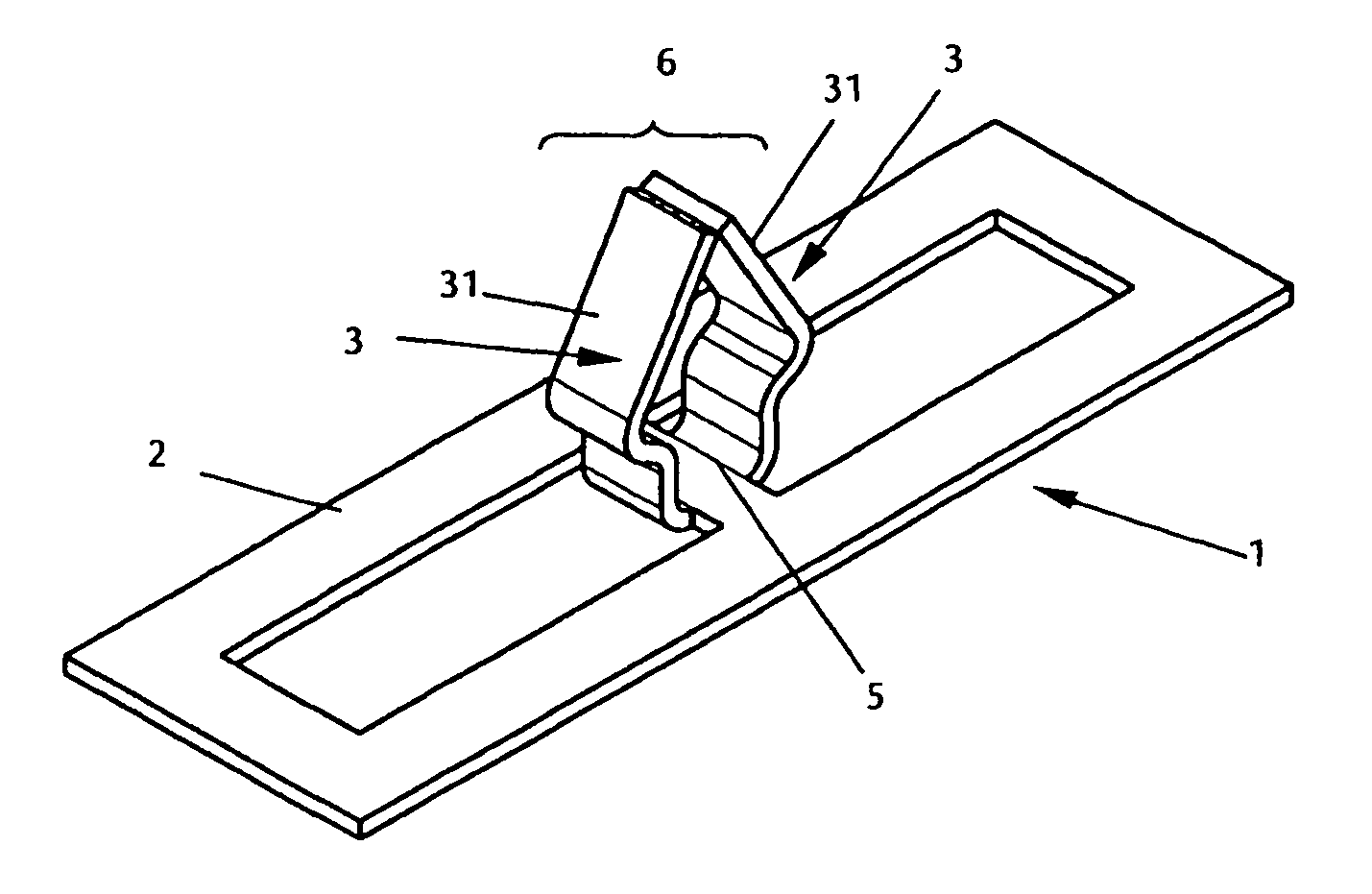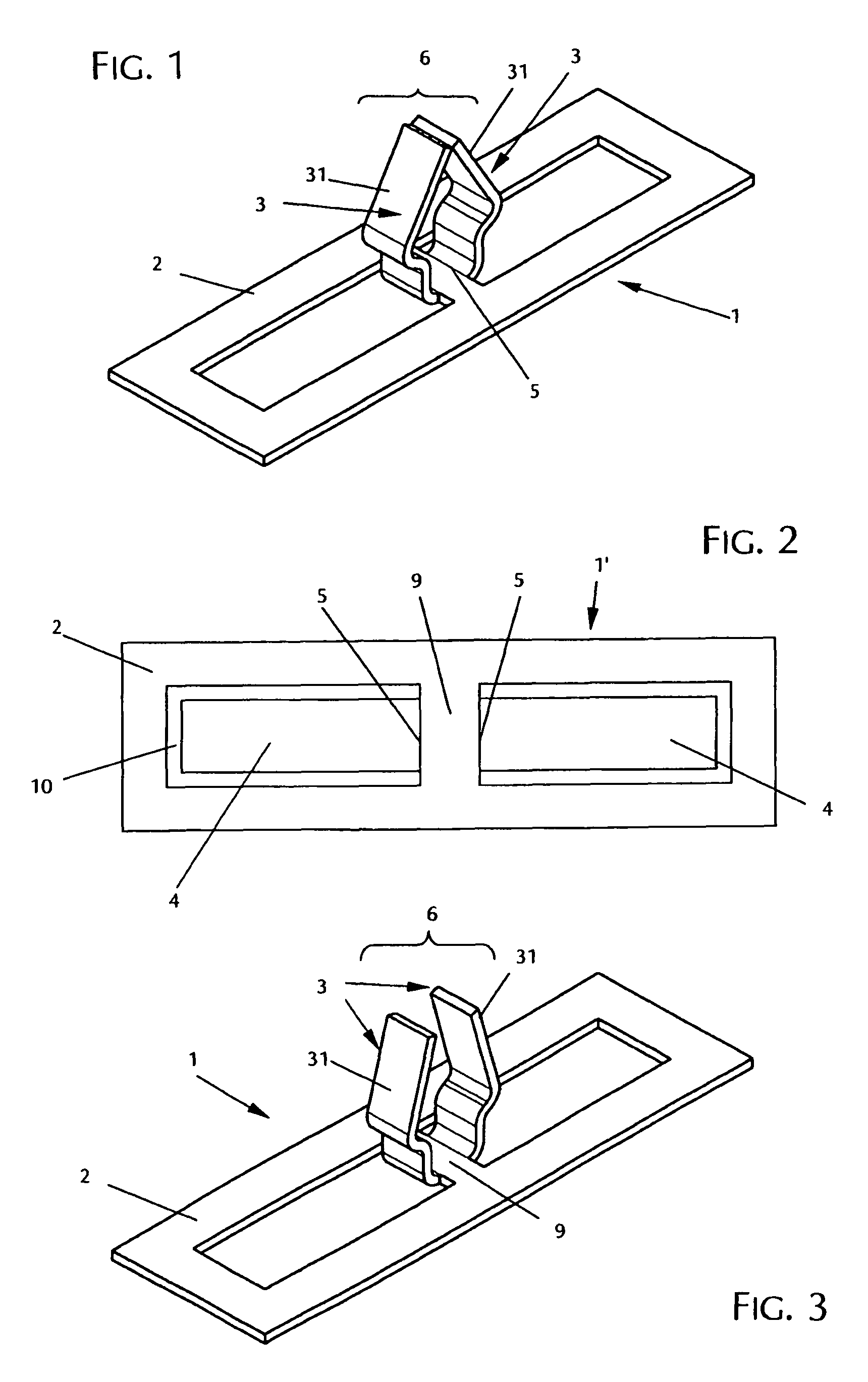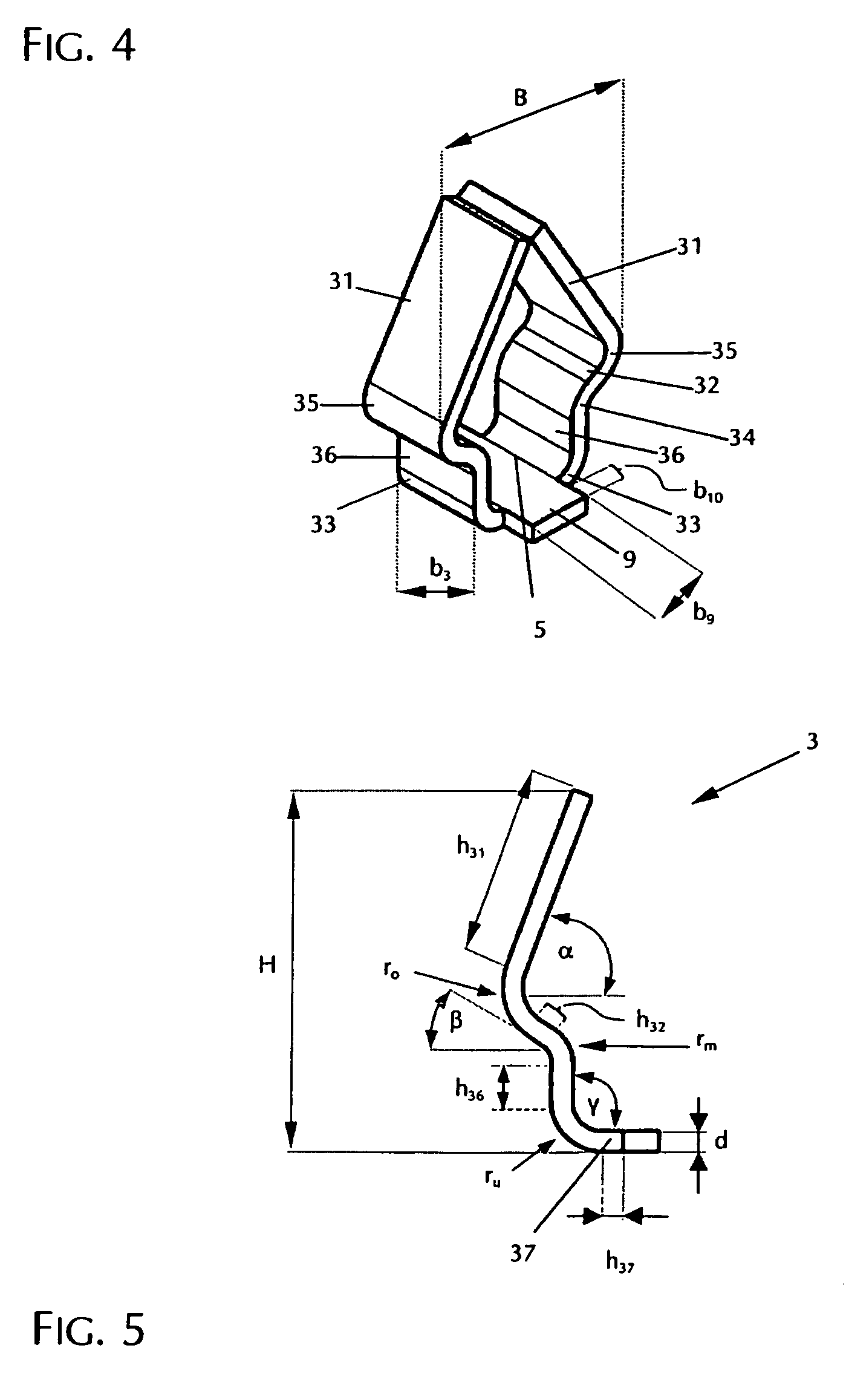Mounting device
a technology of mounting device and sleeve, which is applied in the direction of curtain suspension device, sheet joining, building scaffold, etc., can solve the problems of not having the required durability, unable to employ manifold uses of plastic hook-and-loop closure, and relatively difficult and complex structure of the surface according to this method, so as to increase the elasticity of the composite, facilitate the production of connection, and increase the effect of elasticity
- Summary
- Abstract
- Description
- Claims
- Application Information
AI Technical Summary
Benefits of technology
Problems solved by technology
Method used
Image
Examples
Embodiment Construction
[0062]In the various embodiments of the present invention illustrated in the figures, identical components are provided with identical reference signs.
[0063]FIG. 1 shows a first exemplary embodiment of a mounting device 1 according to the present invention. It comprises a base plate 2, from which two fastening projections 3 are bent out projecting above one of the surfaces of the base plate 2. The production is performed from a blank 1′, as is shown as an example in FIG. 2. The blank 1′ is obtained by punching, or incising in another way, U-shaped free punches 10 in a metal plate made of spring steel, for example, in order to produce two rectangular, diametrically opposite tab blanks 4. These tab blanks 4 are still each connected to the base plate 2 at a connection section 5 and separated from one another by a web 9. After being cut free of the base plate 2, the tabs 4 are bent out of the plane of the base plate 2. The curves along the fastening projections 3 are expediently produce...
PUM
| Property | Measurement | Unit |
|---|---|---|
| total height | aaaaa | aaaaa |
| angle | aaaaa | aaaaa |
| angle | aaaaa | aaaaa |
Abstract
Description
Claims
Application Information
 Login to View More
Login to View More - R&D
- Intellectual Property
- Life Sciences
- Materials
- Tech Scout
- Unparalleled Data Quality
- Higher Quality Content
- 60% Fewer Hallucinations
Browse by: Latest US Patents, China's latest patents, Technical Efficacy Thesaurus, Application Domain, Technology Topic, Popular Technical Reports.
© 2025 PatSnap. All rights reserved.Legal|Privacy policy|Modern Slavery Act Transparency Statement|Sitemap|About US| Contact US: help@patsnap.com



